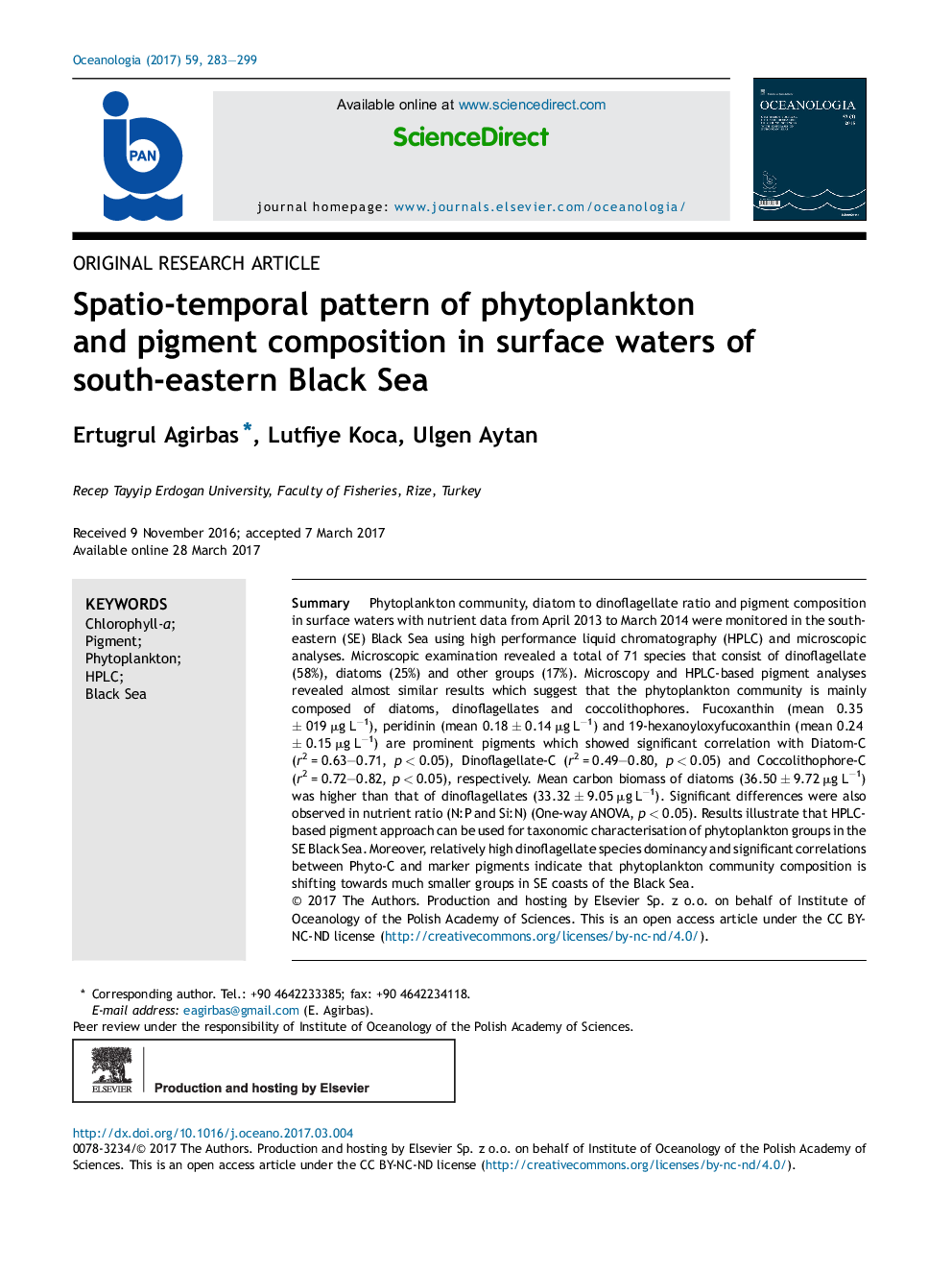| Article ID | Journal | Published Year | Pages | File Type |
|---|---|---|---|---|
| 5519776 | Oceanologia | 2017 | 17 Pages |
SummaryPhytoplankton community, diatom to dinoflagellate ratio and pigment composition in surface waters with nutrient data from April 2013 to March 2014 were monitored in the south-eastern (SE) Black Sea using high performance liquid chromatography (HPLC) and microscopic analyses. Microscopic examination revealed a total of 71 species that consist of dinoflagellate (58%), diatoms (25%) and other groups (17%). Microscopy and HPLC-based pigment analyses revealed almost similar results which suggest that the phytoplankton community is mainly composed of diatoms, dinoflagellates and coccolithophores. Fucoxanthin (mean 0.35 ± 019 μg Lâ1), peridinin (mean 0.18 ± 0.14 μg Lâ1) and 19-hexanoyloxyfucoxanthin (mean 0.24 ± 0.15 μg Lâ1) are prominent pigments which showed significant correlation with Diatom-C (r2 = 0.63-0.71, p < 0.05), Dinoflagellate-C (r2 = 0.49-0.80, p < 0.05) and Coccolithophore-C (r2 = 0.72-0.82, p < 0.05), respectively. Mean carbon biomass of diatoms (36.50 ± 9.72 μg Lâ1) was higher than that of dinoflagellates (33.32 ± 9.05 μg Lâ1). Significant differences were also observed in nutrient ratio (N:P and Si:N) (One-way ANOVA, p < 0.05). Results illustrate that HPLC-based pigment approach can be used for taxonomic characterisation of phytoplankton groups in the SE Black Sea. Moreover, relatively high dinoflagellate species dominancy and significant correlations between Phyto-C and marker pigments indicate that phytoplankton community composition is shifting towards much smaller groups in SE coasts of the Black Sea.
